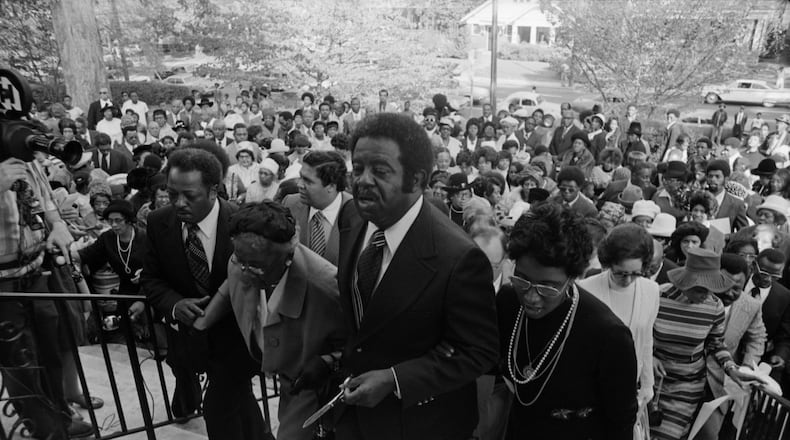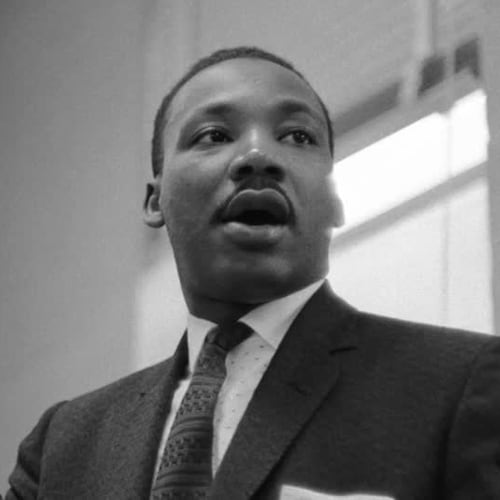Sometimes it seems as though Atlanta has always been a one of America’s crowning cities of African-American leadership and culture. Look to its origins in the mid-19th century and the community’s achievements prove even more impressive.
This story originally appeared in the March/April 2016 edition of Living Intown Magazine.
Before the Civil War, such Southern cities as Charleston and Savannah included thousands of free black citizens in their populations, in addition to those in bondage. In Atlanta, however, “only 19 free blacks — 13 female and six male — lived in the city in 1850, and a decade later, that number had risen to only 25,” according to Allison Dorsey in her book “To Build Our Lives Together: Community Formation in Black Atlanta, 1875-1906.”
The war and Reconstruction caused drastic shifts. The military footing brought more slave labor into the city, while the aftermath saw more free black migrants attracted to Atlanta from neighboring states. From this foundation gradually grew thriving black neighborhoods. Some of them remain, some have been heavily changed and some have gone with scarcely a trace, but in many ways, they’ve given the city its heart.
When old wards were new
After Atlanta’s incorporation in 1847, the city in 1854 was divided into five wards, many of which had black settlements.
The western First Ward included Jenningstown, originally a shantytown built atop Diamond Hill, with an all-black population apart from some white missionaries.
The Second Ward, to the Southwest, featured Mechanicsville, named for the workers of the railway lines. Neighboring Mechanicsville, Summerhill was one of the first post-war settlements with freed slaves as well as Jewish immigrants.
Most famously, the northeastern Fourth Ward contained a shanty town called Shermantown, named after Gen. William T. Sherman.
From humble beginnings, the communities evolved in the subsequent decades. “After the Civil War, there were three major areas of African-American clustering,” says Tim Crimmins, Georgia State University history professor and director of the Center for Neighborhood and Metropolitan studies. “One was along Auburn Avenue, then called Wheat Street. One was east of what’s now Turner Field, Summerhill. And one was on the West Side, with the establishment of Atlanta University, now Morris Brown. That’s where churches and schools were located.”
Crimmins cities Atlanta University’s Gaines Hall, originally called North Hall, as the city’s most important historic landmark. William H. Parkins, Atlanta’s first architect to practice after the Civil War, designed the Italianate building. “Built in 1869 by the American Missionary Association, it began with elementary and secondary education,” Crimmins says. “In the 1870s, it had white members teaching black children, eating with them. It was one of the first signs of what Martin Luther King Jr. would call ‘the beloved society.’ But nobody knows about it.”
Churches also became centers of community activity beyond spirituality. “They were not just religious gathering spots — the larger ones ended up as big meeting places,” Crimmins says. “ In the 1890s, when white officials like Gov. [William J.] Northen wanted to talk to black community, they would have rallies at churches like Big Bethel. And they were places for rallying around civil rights before what we’d call the ‘civil rights era.’”
Rising despite resistance
Atlanta’s African-American community suffered a pair of blows in the early 20th century that significantly influenced where its people would live and work. In 1906, a race riot erupted in downtown that lead to at least two dozen black fatalities (with some estimates much higher). The bloodshed accelerated the move of African-American businesses away from downtown.
“There had already been a clustering of business and churches on Auburn Avenue,” Crimmins says. “After the race riot, [the street] saw increased building of offices for black professionals, like the Atlanta Life Building. Alonzo Herndon built Atlanta Mutual, [and] the grandest of all was the Odd Fellows building, with its grand theater.”
The name Sweet Auburn was coined by civic leader John Wesley Dobbs, who called it the “richest Negro street in the world,” and it featured the all-black Atlanta Daily World newspaper and such night life as the Top Hat Club.
Today’s tourists are well familiar with the civil rights attractions along the avenue, such as King’s 1929 birthplace at 501 Auburn and Ebenezer Baptist Church, where King first spoke from the pulpit, at 407 Auburn.
Auburn Avenue was spared by the Great Fire of 1917, which devastated the Old Fourth Ward. It began the morning of May 21 at a Grant Street residence, but at least four other fires contributed to the day’s blaze, exacerbated by dry conditions and wood-shingled roofs.
More than 300 acres and 1,938 buildings were consumed by fire, leaving more than 10,000 homeless (mostly African-Americans). Only a few injuries and one death were reported, but the fire caused more than $5 million in property damage, and caused many African-Americans to relocate to such West Side neighborhoods as Ashby Heights and Washington Park.
Crimmins points out that African-American suburbanization began to occur in such neighborhoods as Summerhill and Washington Park, comparable to Virginia-Highland and Candler Park.
“Old Hunter Street was an important a node of African-American suburbanization that took place on the West Side from the 1920s onward,” he says. “A commercial district developed along what’s now Martin Luther King Boulevard.” Popular spots along Hunter Street included the Amos Drug Store, Young’s Artistic Barber shop and the Ashby Theatre.
Paschal’s Restaurant became a gathering place for African-American leadership in the 1960s. Opened as a sandwich shop by Robert and James Paschal, the restaurant took onsuch nicknames as the kitchen of the civil rights movement and “Little City Hall.” King and his aides planned the Poor People’s campaign and the march from Selma to Montgomery there, and other customers included Andrew Young, Julian Bond, Stokely Carmichael and H. Rap Brown.
In 1960, the Pascal brothers opened a nightclub downstairs, which featured acts such as Aretha Franklin and Dizzy Gillespie, and in 1967 included Atlanta’s first black-owned hotel on the property. The restaurant was sold to Clark Atlanta University in 1996 and closed in 2003.
Some of the city’s most impoverished neighborhoods served primarily as places to escape from, but left some enduring footnotes with names like Tanyard Bottom, Tight Squeeze, Lightning and Beaver Slide. One of the most memorable, Buttermilk Bottom, was on the east side of the downtown business district.
Michael Rose’s “Lost Atlanta” offers theories for the origins of the name, including that the “pooling of excess water on the neighborhood’s unpaved streets created the appearance of buttermilk.” The neighborhood’s extensive urban renewal displaced more than 1,000 homes and businesses, and it took the new name Bedford Pine in 1970.
Atlanta’s tendency to pave over its past particularly takes a toll on its black history, with significant sites like Gaines Hall and Paschal’s Restaurant facing uncertain futures. An exception is Collier Heights, also called “The Historic Collier,” found in 1948 in the city’s Southwest.
One of the first U.S. communities designed exclusively by black planners for black middle-class residents, Collier Heights became the first community listed as a historic site on the National Register of Historic Places in 2009. It serves as living proof that the city’s heritage extends beyond Sweet Auburn.
About the Author
The Latest
Featured


